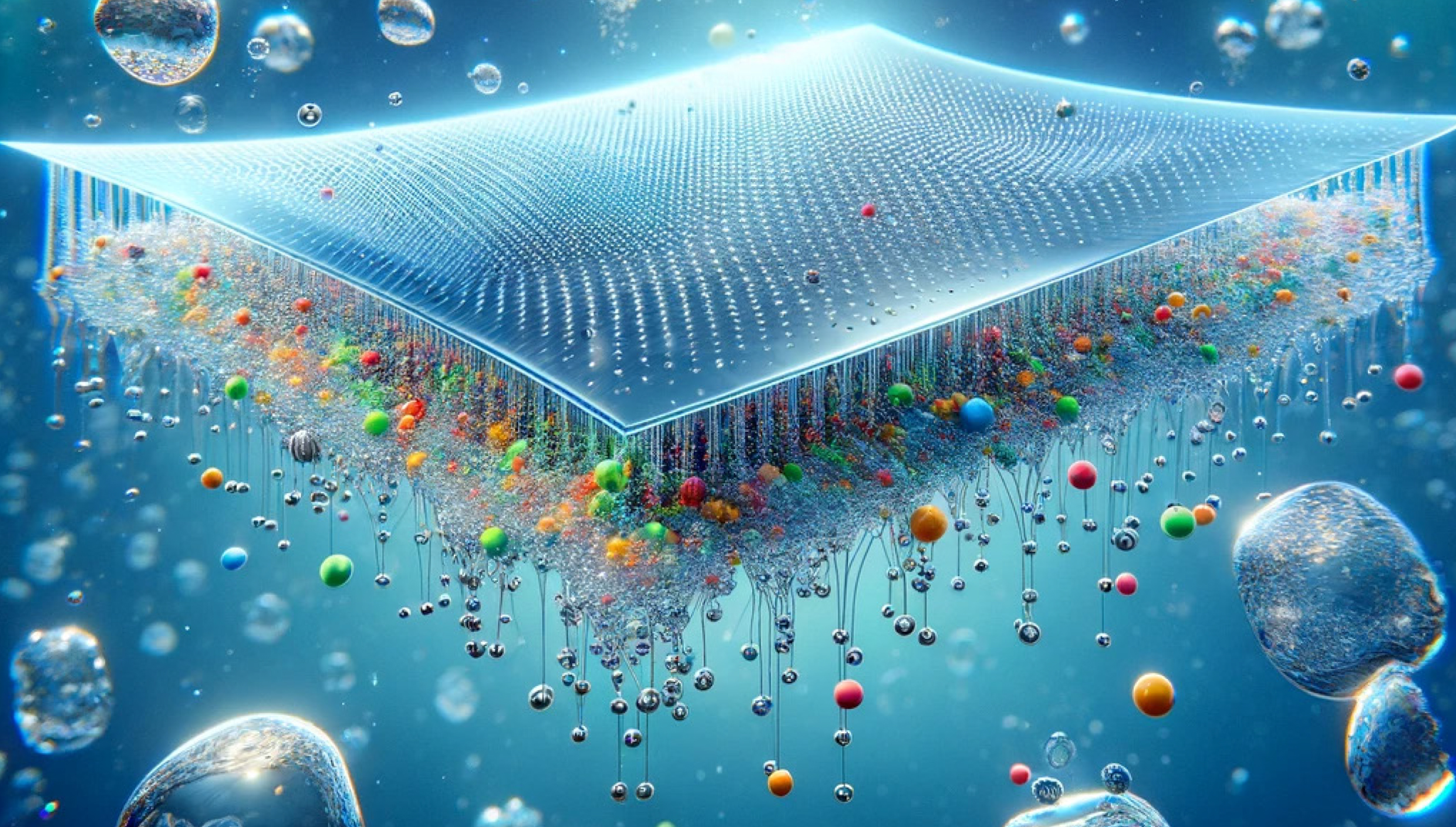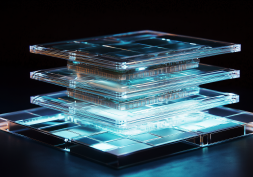Injecting fresh energy into membrane technology
Follow CDE
PDF Download

NUS CDE researchers challenge the status quo of membrane technology with a novel design that promises enhanced energy efficiency and versatility.
Whether it’s ensuring the safety of drinking water or filtering pathogens in air purification systems, membranes have long been inseparable from many modern industrial processes fundamental to our daily lives.
Inorganic membranes are a lot like kitchen sieves. Like how sieves separate liquids from fine solids in cooking, inorganic membranes, typically made of ceramics or metals, selectively isolate molecules based on various factors such as size and charge.
As the global push towards climate protection prompts stricter emissions standards, the race is on to develop membrane technologies that enable more efficient and environmentally sustainable practices.
A team of researchers from the College of Design and Engineering at the National University of Singapore, led by Professor Ho Ghim Wei from the Department of Electrical and Computer Engineering, has developed energy-efficient and highly customisable inorganic membranes.
The newly designed membranes have the potential to benefit applications beyond filtration and separation. From energy conversion to catalysis and sensing, versatility is also a key feature of the membranes, which could help drive efficiency and sustainability in various industrial processes.
Reimagining membranes from the ground up
Conventional organic membrane technologies, typically used in purification and separation processes, tend to be energy-intensive, which results in considerable operational costs. Over time, these organic membranes also require regeneration, while the filtered components require further treatment — all of which equate to more expenses.
“Such limitations have driven us to reconsider membranes in terms of what they’re made of, how they’re structured and what they can do,” says Prof Ho. “Membranes play an integral, and often enabling role in many industrial processes. Enhancing their energy efficiency is what we can do to reduce the overall power consumption and, consequently, the carbon emissions associated with these processes.”
With this goal in mind, Prof Ho’s research team developed a technique for creating ultrathin, free-standing inorganic membranes. Crucially, these membranes can operate without the need for a supporting substrate — a big plus for their flexibility and functionality.
“Our method involves taming chaotic, free-floating, inorganic building blocks in a liquid environment, coaxing them to self-assemble into the desired membrane structure,” explains Dr Zhang Chen, a postdoctoral fellow in the team and first author of the study. “From a structural perspective, the membranes have more geometric diversity than their conventional counterparts — this means we can design them for specific, customised applications. Furthermore, unique membrane structures with diverse topologies have been fabricated, including those formed by mixing two particle types, continuous patchwork of non-mixing particle domains, and vertically stacked membranes.”
Functionality leads to versatility
Functionality was also a key focus for the team. They engineered the membranes to act as highly selective two-dimensional barriers, across which energy transfer can be precisely controlled. This unique feature enables the membranes to filter ions by charge, selectively concentrate certain molecules and harness different forms of energy, such as thermal, electrical or light, in the separation process.
The ability to create flexible, functional, freestanding inorganic membranes is a boon for many industries that rely heavily on membranes for their operations, particularly those related to the energy or environmental sectors. The researchers reckon that their novel design could be deployed in applications such as advanced spatial dynamic separation, catalysis, sensor technology, memory storage and ionic conductors.
Published in Nature on 29 March 2023, the team’s paper also includes a synthesis template on which other researchers can base their work. This could spur the development of a broader array of novel membranes with more diverse compositions.
New sieves on the block
“This advancement in inorganic membrane design opens new possibilities, essentially rejuvenating what is considered a mature field of membrane technology,” adds Prof Ho.
Motivated by the potential of this breakthrough, Prof Ho is now leading a multidisciplinary team to further explore the vast spectrum of membrane compositions and couple them with various forms of energy. They are also concurrently focusing on developing automated manufacturing tools to facilitate the large-scale production of this technology.
Related
Ho Ghim Wei ▏Professor, Department of Electrical and Computer Engineering ▏LinkedIn Profile
Related Departments
Read More
View Our Publications ▏Back to Forging New Frontiers - April 2024 Issue
If you are interested to connect with us, email us at cdenews@nus.edu.sg








